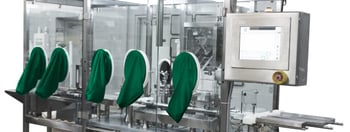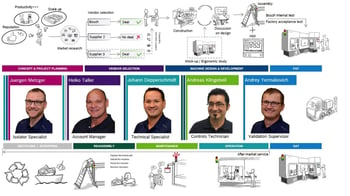High speed filling of liquid pharmaceuticals is a timely topic as we find ourselves in the midst of the global SARS-CoV-2 pandemic. As the race for a vaccine and treatments fills the headlines, drug manufacturers and government agencies alike are searching for partners to expand and rapidly scale-up future therapeutic production.
Such additional demand may lead to over 1B+ additional doses which will create pressure on the existing supply chain and impact fill/finish as well. The likely surge in demand is placing pressure on pharmaceutical manufacturers to produce at unprecedented rates. Pharmaceutical companies and contract manufacturers have started to invest heavily in cutting-edge aseptic fill/finish technologies to increase production capacity and overall equipment effectiveness. Still, the fill/finish industry is expecting a gap between demand and supply. With little fill/finish capacity to spare, pharmaceutical manufacturers will have to rely on allocating existing capacity and building new capacity to meet SARS-CoV-2 global medical countermeasures. Ultimately, a forward-thinking approach that takes into account much needed equipment modernization combined with next generation packaging capabilities will be the key to unlocking ultra-high speed capacity preparedness. With Syntegon’s ultra-high speed filling lines enabled by next-generation pharmaceutical glass packaging by Corning, that key is here.
There are many factors that limit the speed and efficiency of pharmaceutical filling machines, including the type of glass vial being processed. Traditionally, filling machines have been deliberately engineered with output constraints due to the physical interactions between the machine and conventional borosilicate glass vials. Stress and friction generation on turn tables, tracks and trays, particularly at junctions between intermittent and continuous motion, lead to glass breakage and human line interventions, which risks greater contamination of sterile environments. Decades of experience with borosilicate glass have allowed Syntegon design engineers to develop machines that can fill vials at ultra-high speeds of up to 750 per minute with certain contingencies. For instance, to achieve line speeds of over 500 per minute, borosilicate glass is typically siliconized on the outside upstream of the depyrogenation tunnel (to reduce glass-to-glass contact friction) and electrostatic eliminators are installed around the filler infeed turntable (to diminish attractive interactions). Without a combination of such contingencies, ultra-high speeds could not be attained, and line efficiency would likely be impacted compromising the commercial viability of the approach.
New vial technology is now allowing our filling machine engineers to explore new frontiers without the constraints mentioned above. A new packaging option by Corning, Valor® Glass, is chemically strengthened and has a low coefficient of friction outer coating which has proven to significantly improve manufacturing throughput. Conventional borosilicate vials typically operate in the range of 60-70% efficiency at up to 450 vials per minute. Valor vials, in comparison, have been shown to achieve over 80% efficiency at maximum filling speeds up to 750 vials per minute [1]. Furthermore, processing Valor vials does not require the use of siliconization prior to filling, reducing complexity and risk of contamination. Valor technology improves vial flow and reduces breakage on the line, helping to enable previously unattainable levels of productivity in pharma filling manufacturing. On existing and new Syntegon fill lines, Valor Glass can enable a boost in capacity and accelerate the scale up of new filling line equipment. These technologies are particularly essential during demand surges created by a pandemic like SARS-CoV-2.
Filling machines, of course, do not function on their own. They are part of a larger final fill solution that typically includes a washer, depyrogenation tunnel, capper, one or more tray loaders, and the fill suite environment. In order to fully recognize the optimizations enabled by the combination of Syntegon high speed filling equipment and Valor Glass, the complete fill/finish line must be able to maintain ultra-high speeds. Syntegon is taking the initiative by applying designs that exceed traditional speeds and efficiencies to existing lines in the field to quickly allow these ultra-high speeds and norm-exceeding efficiencies to be realized when using this new packaging technology. Millions of Valor vials have been tested on numerous Syntegon commercial filling lines in the USA and have shown compatibility and in certain circumstances superior operational performance compared to conventional borosilicate. To meet increasing demand, Syntegon has standardized its most popular pharmaceutical vial filling and closing machines into complete high and ultra-high-speed line solutions, with lead times as short as 7 months. Corning, for its part, has installed additional capacity that could ramp up to support 1B+ additional doses per year. Together, Syntegon and Corning are pushing the boundaries for the rapid implementation of additional fill/finish manufacturing capacity.
To learn more about this topic, read our PharmTech sponsored whitepaper.
1: https://www.pharmamanufacturing.com/articles/2019/stabilizing-the-supply/




